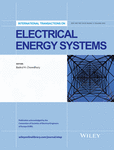An SSR multichannel damping control scheme for TCSC considering multiple operating conditions
Summary
The impact of thyristor-controlled series capacitor (TCSC) on subsynchronous resonance (SSR) varies with the firing angle, which may significantly reduce the robustness of subsynchronous damping controller (SSDC). To solve this problem, a multichannel damping control scheme for TCSC is proposed in this study for mitigating SSR considering multiple operating conditions. Firstly, an SSR identification method based on PASTd algorithm and subspace estimation, which performs well in term of anti-noise and accuracy, is adopted to extract the necessary information for design of the proposed SSR damping control scheme. By using this identification method, the characteristics of the SSR are investigated when TCSC operates under different conditions. The analysis results show that the phase lags change significantly with the varying of firing angle of TCSC, and in this case, the compensation scheme for the phase lags becomes the main difficulty for SSR damping control. Then, a novel optimal design method is proposed to realize the optimum compensation using multichannel SSDC under different operating conditions. Moreover, as the attenuation coefficients of torsional modes are considered in the optimal design method, the compensation effectiveness on weak damping modes is enhanced. Finally, the PSCAD/EMTDC based simulation results illustrate the validity and adaptability of the proposed SSR multichannel damping control scheme. Copyright © 2016 John Wiley & Sons, Ltd.




